Care tips and advice
These plants are able to survive in shady areas, as long as it’s not too dark. Find out more about the ideal growing conditions and care tips to make sure your plant has a long and happy life.
Wild betel
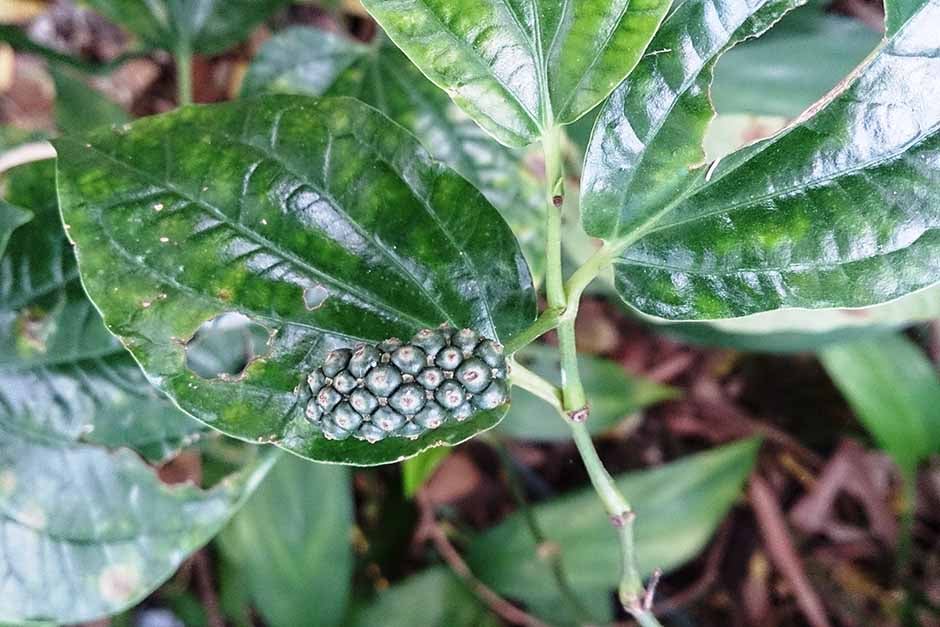
Piper sarmentosum
Light: Piper sarmentosum prefers bright, indirect sunlight. It can tolerate partial shade, which makes it suitable for growing indoors. Avoid direct sunlight, which can scorch its leaves.
Watering: Keep the compost consistently moist but not waterlogged. Water when the few centimetres of compost feels dry to the touch. This plant does not tolerate drought well, so it’s important to maintain a regular watering schedule, especially during warmer months.
Humidity: This tropical plant loves high humidity. If your indoor air is dry, especially during winter, use a humidifier or place the pot on a tray filled with pebbles and water to increase humidity around the plant. Misting the leaves regularly can also help.
Temperature: Piper sarmentosum thrives in warm conditions, ideally between 18°C to 29°C. Protect it from drafts and sudden temperature changes to prevent stress.
Fertiliser: Feed every during the growing season (April to September) following the instructions on the pack. Reduce feeding in autumn and winter as the plant growth slows.
Pruning: Pruning is not typically necessary but can be done to control the plant’s shape and size. Use clean, sharp scissors to trim any leggy or overgrown stems. This can also encourage bushier growth.
Repotting: Repot
Piper sarmentosum every 2-3 years or when it becomes root-bound. Spring is the best time to repot just before the growing season. Use a well-draining, peat-free compost and a pot with good drainage holes to prevent water accumulation.
Pests and Diseases: Watch for pests such as red spider mite, aphids and mealybug.
Edible: Berries
Pandan
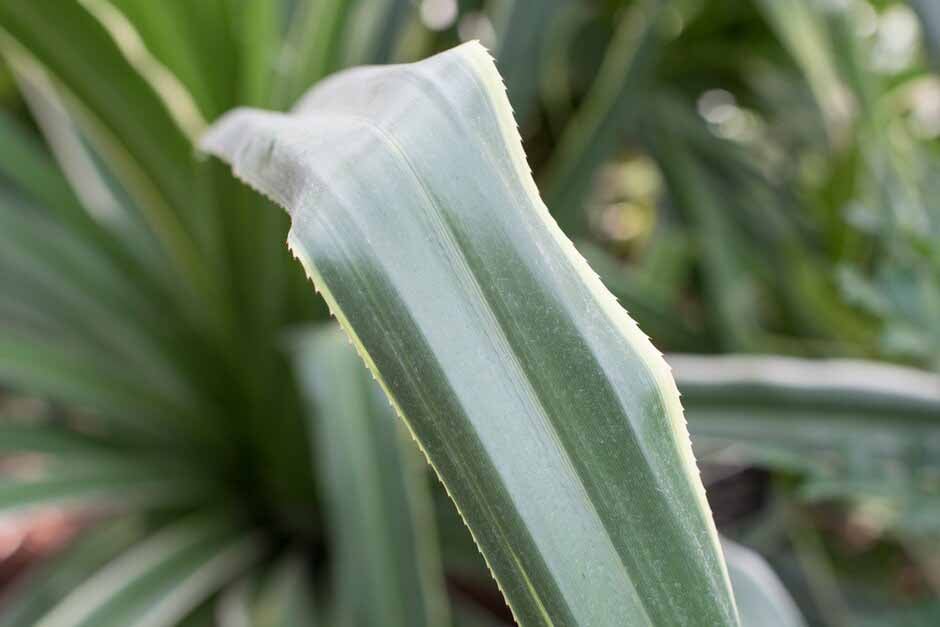
Pandanus
Light: Pandan prefers bright, indirect sunlight. It can tolerate some direct sunlight, but too much can cause leaf burn. A spot near a window that receives filtered light for most of the day is ideal.
Watering: Keep the compost consistently moist but not waterlogged. Water the plant when the top few centimetres of compost feels dry to the touch. Pandan enjoys a humid environment and does not tolerate drought well.
Humidity: This plant thrives in high humidity conditions. If your indoor air is dry, especially during winter, use a humidifier or place the pot on a tray filled with pebbles and water to increase the surrounding humidity. Misting the leaves regularly can also help.
Temperature: Pandan prefers warm temperatures, ideally between 16°C to 25°C. Protect it from cold drafts and temperatures below 10°C, as it is not frost-tolerant.
Fertiliser: Feed your pandan plant with a balanced, water-soluble fertiliser every 4-6 weeks during the growing season (spring and summer). Reduce fertilisation in the fall and winter months.
Pruning: Pruning is not generally necessary, but you can trim any dead or yellowing leaves to maintain the plant’s appearance. Use clean, sharp scissors or shears to avoid damaging the plant.
Repotting: Repot the pandan plant every 2-3 years or when it becomes root-bound. Use a well-draining potting mix and a pot with good drainage holes. The best time to repot this plant is in the spring as it will be actively growing during this time, they’ll get the most out of additional space and fresh nutrients.
Pests and Diseases: Keep an eye out for common pests such as mealybug, and scale insects.
Variegated rubber plant
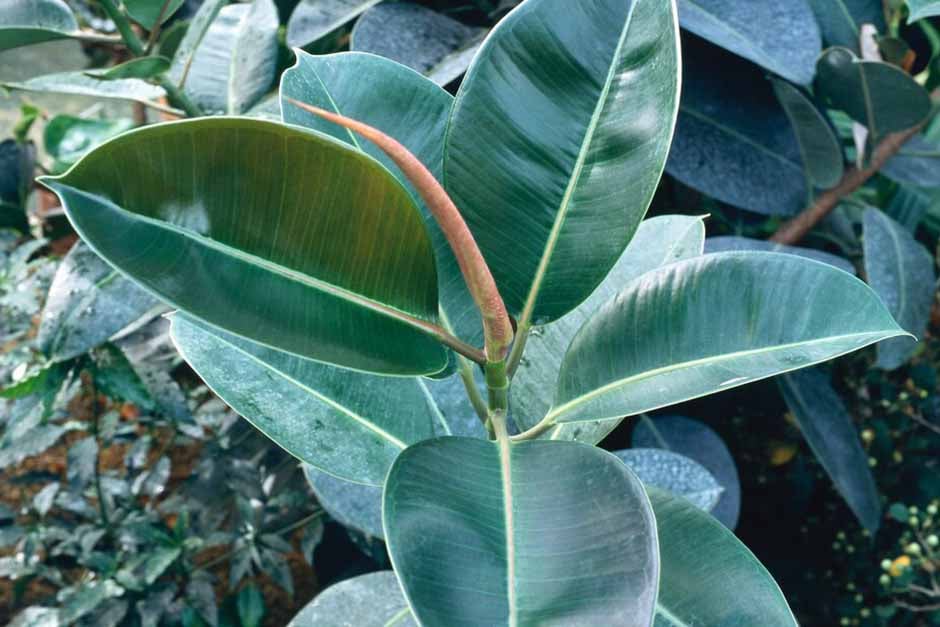
Ficus elastica ‘Tineke’
Light: Ficus elastica ‘Tineke’ prefers bright, indirect light. It can tolerate some morning or late afternoon sun, but avoid placing it in direct sunlight for extended periods, which can scorch its beautifully variegated leaves. A spot near an east or west-facing window is ideal.
Watering: Water when the top few centimetres of compost becomes dry to the touch. Ensure the plant is watered thoroughly until water drains through the bottom of the pot, but allow the compost to dry out somewhat between waterings. Overwatering can lead to root rot, so ensure good drainage.
Humidity: This plant benefits from moderate to high humidity but can tolerate average household humidity levels. If your home is very dry, especially in winter, consider using a humidifier or placing a pebble tray with water beneath the plant pot to increase humidity.
Temperature: Ficus elastica ‘Tineke’ prefers temperatures between 15°C to 24°C. Protect it from drafts and sudden temperature fluctuations, which can cause leaf drop.
Fertiliser: Feed every during the growing season (April to September) following the instructions on the pack. Reduce feeding in autumn and winter as the plant growth slows.
Pruning: Pruning can help maintain the desired shape and size of your plant. Use clean, sharp shears to cut just above a leaf node. Pruning can also encourage bushier growth.
Repotting: Repot in the spring every 2-3 years, or when the plant becomes root-bound. Use a well-draining potting mix and a pot that's only slightly larger than the current one to prevent overwatering.
Pests and Diseases: Watch out for common pests such as red spider mite, mealybug and scale insects.
Chinese evergreen
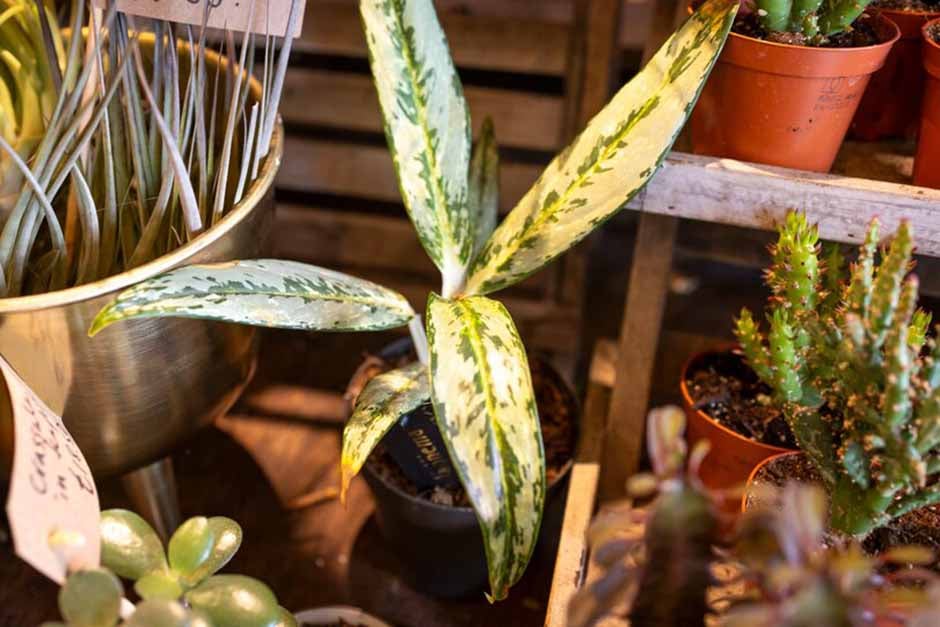
Aglaonema hybrid
Light: Aglaonema prefers low to medium, indirect light. It can tolerate lower light conditions better than many other houseplants, making it ideal for less sunny spots in your home. However, variegated varieties may require brighter light to maintain their patterning.
Watering: Water the plant when the top few centimetres of compost feel dry to the touch.
Aglaonema does not like to sit in waterlogged compost, so ensure good drainage to prevent root rot. Reduce watering in the winter months as these plants will pause on growing and therefore will take up less water through their leaves.
Humidity: This plant appreciates high humidity but can tolerate average indoor humidity levels. To increase humidity, consider placing it on a pebble tray with water or using a humidifier, especially during dry winter months.
Temperature: Aglaonema prefers warmer temperatures, ideally between 18°C to 24°C. Keep it away from drafts, air conditioners, and heating vents, as it is sensitive to cold drafts and extreme temperature fluctuations.
Fertiliser: Feed every during the growing season (April to September) using half the rate stated in the instructions on the pack. Reduce feeding in autumn and winter as the plant growth slows.
Pruning: Pruning is generally not necessary, but you can trim away any yellow or brown leaves to keep the plant looking tidy. Use clean, sharp scissors or pruning shears to avoid damaging the plant.
Repotting: Repot the plant every two to three years or when it becomes root-bound. We recommend repotting in spring using a well-draining potting mix and choosing a pot that is one size larger than the current one.
Pests and Diseases: Aglaonema can be susceptible to pests such as red spider mites, mealybug and aphids.
Beware: this plant is harmful if eaten and a skin and eye irritant for humans and pets.
Variegated peace lily
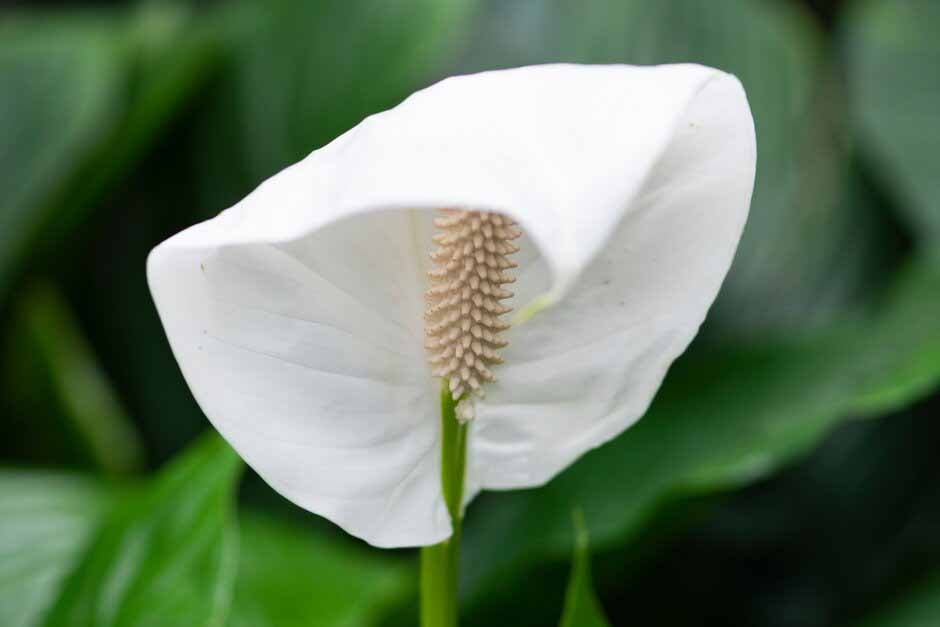
Spathiphyllum ‘Diamond’
Light: The ‘Diamond’ peace lily prefers bright, indirect light but can tolerate lower light conditions, which makes it an excellent indoor plant. Avoid direct sunlight, which can scorch its white and dark green leaves.
Watering: Keep the soil consistently moist but not waterlogged. Water when the few centimetres of compost feels dry to the touch. Peace lilies are sensitive to overwatering and under-watering; if the leaves droop, it’s a sign that the plant needs water.
Humidity: This plant thrives in high humidity. If your home is dry, especially in winter, use a humidifier or place the pot on a tray filled with pebbles and water to increase humidity around the plant. Misting the leaves can also help.
Temperature: Spathiphyllum ‘Diamond’ prefers temperatures between 18°C to 27°C. Avoid placing it near drafts, air conditioners, or heaters, as extreme temperature changes can stress the plant.
Fertiliser: Feed every during the growing season (April to September) following the instructions on the pack. There’s no need to feed this plant in the autumn and winter months.
Pruning: Remove yellow or brown leaves at the base of the plant to keep it looking tidy. After the flowers fade, cut the flower stalks off close to the base to encourage new blooms.
Repotting: Repot the ‘Diamond’ peace lily every 1-2 years or when it becomes root-bound. Use a well-draining potting mix and a pot that’s slightly larger than the current one. The best time to repot is in the spring.
Pests and Diseases: Keep an eye out for pests such as aphids, thrips and mealybug.
Beware: this plant is harmful if eaten and a skin irritant for humans and pets.
Spotted begonia
 Begonia maculate ‘Megadot’
Light: Begonia maculata
Begonia maculate ‘Megadot’
Light: Begonia maculata thrives in bright, indirect light. Avoid direct sunlight, which can scorch its leaves. An east or west-facing window covered by a sheer curtain is ideal.
Watering: Water when the few centimetres of compost feels dry to the touch, typically once a week. Begonias prefer a consistent moisture level but are prone to root rot if overwatered. Ensure good drainage by using pots with drainage holes.
Humidity: This plant loves high humidity. If your indoor air is dry, especially during winter, use a humidifier, mist the leaves regularly, or place the pot on a tray filled with pebbles and water to increase humidity around the plant.
Temperature: Begonia maculata prefers temperatures between 18°C to 24°C. Protect it from drafts and sudden temperature changes, which can stress the plant.
Fertiliser: Feed every during the growing season (April to September) following the instructions on the pack. Do not fertilise in winter.
Pruning: Pruning can help maintain the desired shape and size. Pinch off the tips of the stems to encourage bushier growth. Remove any yellow or damaged leaves to keep the plant healthy.
Repotting: Repot in the spring every 1-2 years or when the plant becomes root-bound. Use a well draining, peat-free houseplant compost and a pot that’s slightly larger than the current one.
Pests and Diseases: Watch out for pests such as aphids and mealybug.
Hawaiian palm
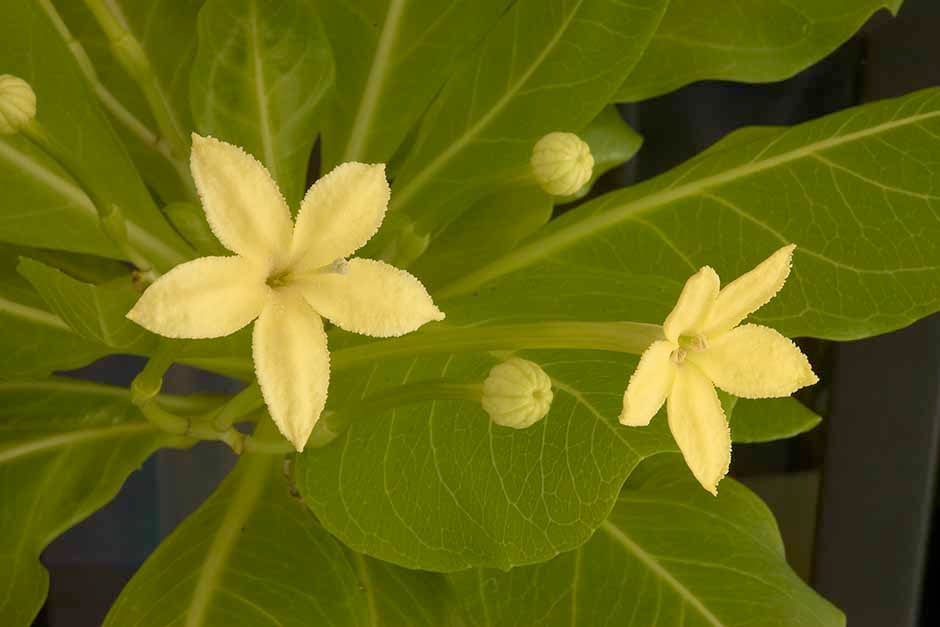 Brighamia insignis
Light: Brighamia insignis
Brighamia insignis
Light: Brighamia insignis prefers bright, indirect light. It can tolerate some direct sunlight, especially in the morning or late afternoon, but too much direct sun can scorch its leaves. A spot near an east or west-facing window is ideal.
Watering: Water the Hawaiian palm when the compost becomes dry to the touch. It’s important to let the compost dry out slightly between waterings to prevent root rot. This plant has succulent-like qualities, storing water in its stem, which allows it to withstand periods of drought. Overwatering can lead to root rot, so ensure the compost is well-draining and you allow it to dry between waterings.
Humidity: Average household humidity is generally adequate for Brighamia insignis, but it can benefit from increased humidity. If your home is very dry, especially during winter, consider using a humidifier or placing the pot on a pebble tray filled with water to gently increase humidity around the plant.
Temperature: It prefers warm temperatures, ideally between 18°C to 24°C. Protect it from drafts and sudden temperature changes. Brighamia insignis is not frost-tolerant, so ensure it’s kept in a warm environment during winter.
Fertiliser: Feed every during the growing season (April to September) following the instructions on the pack. Reduce feeding in autumn and winter to one every 2-3 months as the plant growth slows.
Pruning: Pruning is generally not necessary. However, you can remove yellow or damaged leaves to keep the plant looking its best. Use clean, sharp scissors or pruning shears to make clean cuts.
Repotting: Repot Brighamia insignis every 2-3 years or when it becomes root-bound. Use a well-draining potting mix, ideally one formulated for cacti and succulents, and choose a pot with good drainage holes to prevent water accumulation.
Pests and Diseases: Be on the lookout for pests such as red spider mite, mealybugs and scale insects.
Flamingo flower
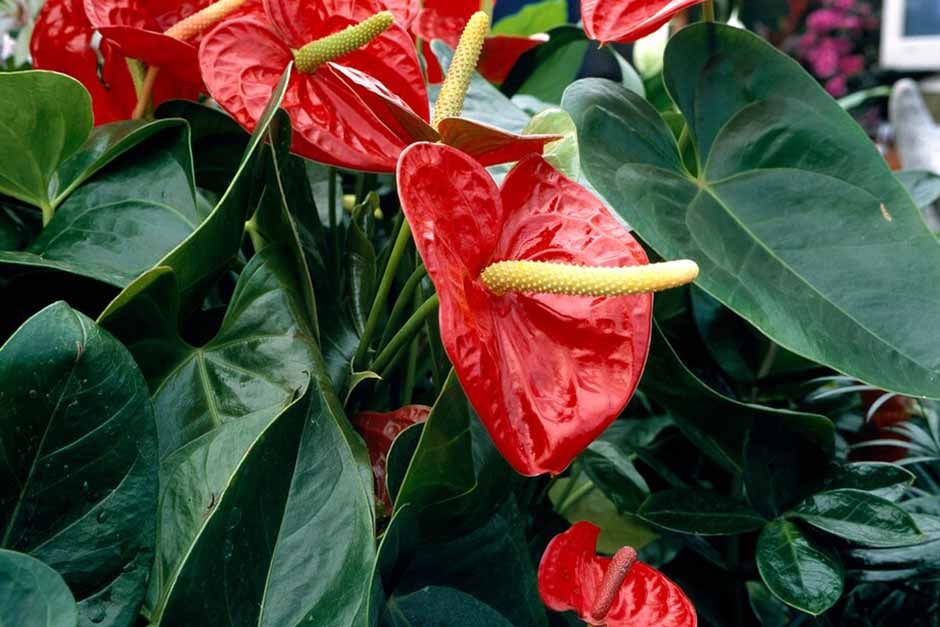 Anthurium andraeanum ‘Black Love’
Light:
Anthurium andraeanum ‘Black Love’
Light: Flamingo flower prefer bright, indirect light. Direct sunlight can scorch their leaves, while too little light may reduce blooming. A spot near an east or west-facing window, shielded by a sheer curtain, is ideal.
Watering: Water when the top inch of soil becomes dry to the touch. Flamingo flowers prefer consistently moist soil but not waterlogged conditions. Use lukewarm water to avoid shocking the plant. Overwatering can lead to root rot, so ensure good drainage and avoid letting the plant sit in standing water.
Humidity: These plants thrive in high humidity, similar to their native rainforest habitat. If your home’s air is dry, especially in winter, use a humidifier, mist the plant regularly, or place the pot on a tray filled with pebbles and water to increase surrounding humidity.
Temperature: Maintain temperatures between 18°C to 27°C. Avoid placing your flamingo flower near drafts, air conditioners, or heaters, as it is sensitive to sudden temperature changes.
Fertiliser: Feed every during the growing season (April to September) at half the rate stated in the instructions on the pack. Reduce feeding in autumn and winter as the plant growth slows.
Pruning: Remove yellow or brown leaves to keep the plant looking tidy. After the flower fades, cut the flower stem at the base to encourage new growth. Regular pruning isn’t necessary but can help maintain the plant’s shape and size.
Repotting: Repot every 2-3 years or when the plant becomes root-bound. Use a well-draining houseplant compost. Spring is the best time to repot, giving the plant time to establish in its new pot before the active growing season.
Pests and Diseases: Watch out for pests such as aphids, mealybug, scale, and red spider mite.
ZZ RAVEN
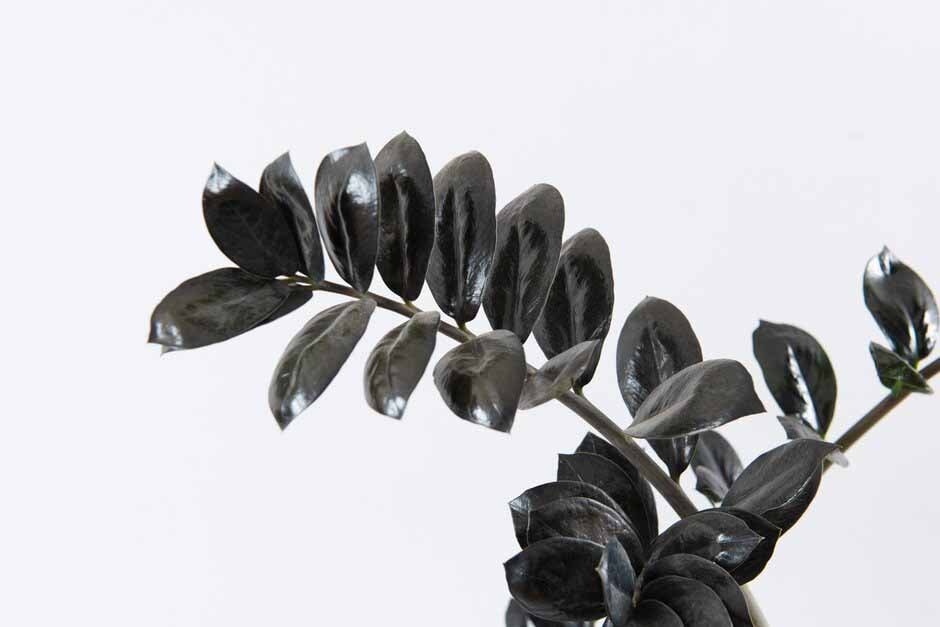 Zamioculcas zamiifolia RAVEN (‘Dowon’ PBR)
Light: Zamioculcas
Zamioculcas zamiifolia RAVEN (‘Dowon’ PBR)
Light: Zamioculcas plants thrive in a wide range of light conditions, from low to bright, indirect light. They can tolerate some direct sunlight, but too much can damage the leaves. A spot that receives filtered light is ideal.
Watering: Water sparingly. Z
amioculcas zamiifolia ‘Raven’ is drought-tolerant, storing water in its rhizomes. Allow the compost to dry out completely between waterings. Overwatering can lead to root rot, so err on the side of underwatering.
Humidity: Average household humidity is adequate for the
Zamioculcas ‘Raven’ ZZ plant. It does not require high humidity levels and is quite adaptable to various indoor environments.
Temperature: Keep the plant in temperatures between 15°C and 24°C. It can tolerate a range of temperatures but should be protected from extreme cold and drafts.
Fertiliser: Feed every during the growing season (April to September) at half the rate stated in the instructions on the pack. Reduce feeding in autumn and winter as the plant growth slows.
Over-feeding can harm the plant, so it’s best to under-feed than overdo it.
Pruning: Pruning is not necessary for the
Zamioculcas plant. You can remove any yellow or damaged leaves with clean shears to keep the plant looking its best.
Repotting: Repot only when necessary, typically every 2-3 years or when the plant becomes root-bound. Use a well-draining potting mix and a pot with good drainage holes. The
Zamioculcas plant prefers to be slightly root-bound, so don’t choose a significantly larger pot.
Pests and Diseases: Zamioculcas are relatively resistant to pests and diseases.
Cast iron plant
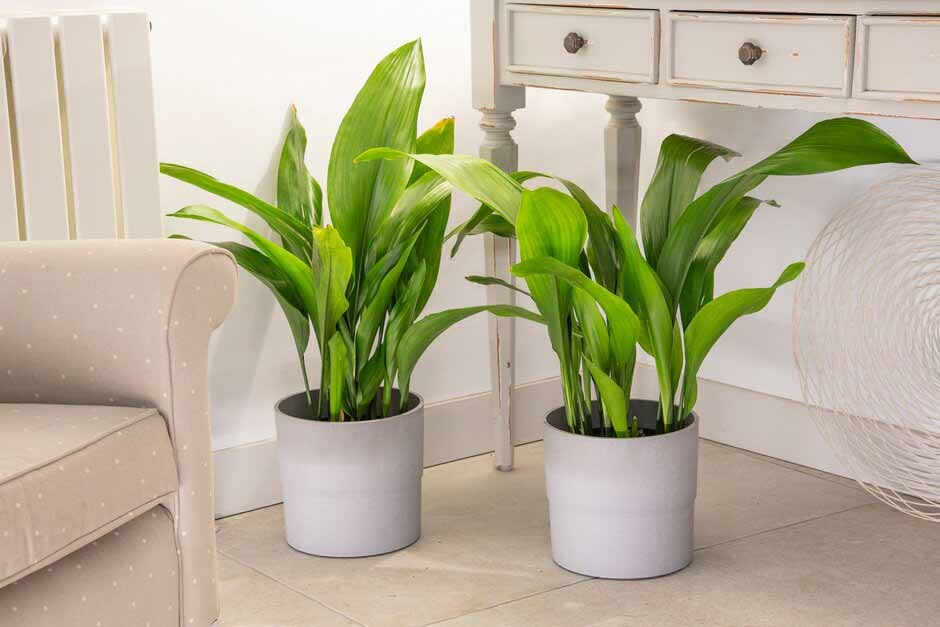 Aspidistra elatior
Aspidistra elatior
Light:
Aspidistra elatior thrives in low to moderate light conditions. It can tolerate deep shade, making it an excellent choice for darker areas of the home where other plants might struggle. Avoid placing it in direct sunlight, which can scorch its leaves.
Watering: Water the cast iron plant only when the compost becomes dry to the touch. It is drought-tolerant and prefers to be on the drier side rather than waterlogged. Overwatering can lead to root rot, so ensure good drainage.
Humidity: This plant is not particularly demanding regarding humidity and can thrive in the average humidity found in most homes.
Temperature: Aspidistra elatior prefers temperatures between 7°C and 27°C. It is very tolerant of temperature fluctuations but should be protected from extreme cold.
Fertiliser: Feed your plant during the growing season (April to September) at half the rate stated in the instructions on the pack. Reduce feeding in autumn and winter as the plant growth slows.
Pruning: Pruning is generally not required. However, you can remove any yellow or damaged leaves at the base to keep the plant looking its best.
Repotting: Repotting is rarely needed, as the cast iron plant prefers to be slightly root-bound. You may consider repotting every 3-4 years or if the plant outgrows its pot. Use a well-draining potting mix and a pot with good drainage holes.
Pests and Diseases: Aspidistra elatior is resistant to most pests and diseases.
Blue star fern
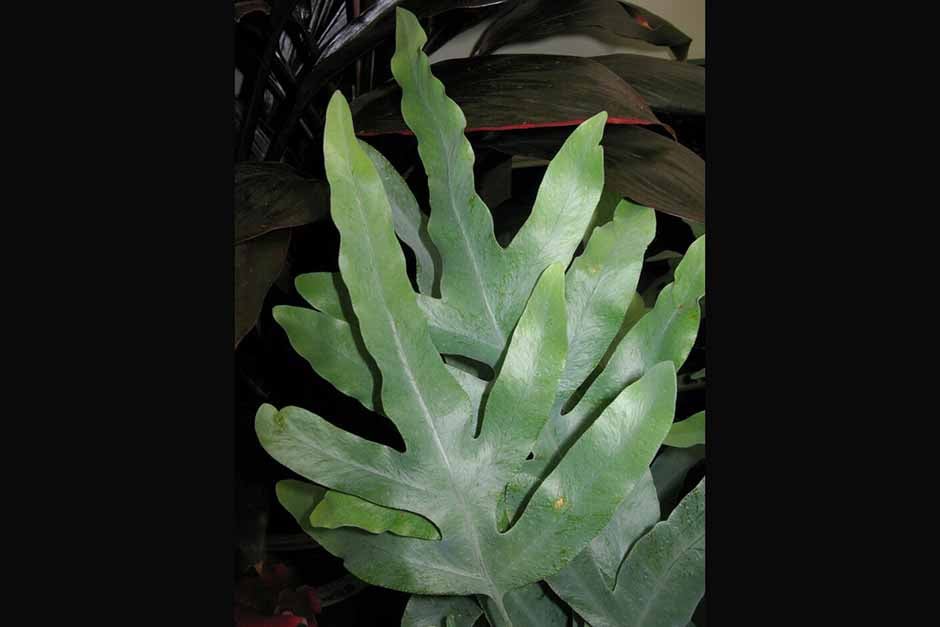 Phlebodium aureum
Phlebodium aureum ‘Blue Star’
Light: This fern prefers bright, indirect light but can tolerate lower light conditions better than many other ferns. Avoid direct sunlight, which can scorch its leaves. A spot near a north-facing window or away from the direct light of a south or west-facing window is ideal.
Watering: Water when the few centimetres of compost feels dry to the touch. This fern likes consistent moisture but does not like to sit in waterlogged compost. Ensure good drainage to prevent root rot.
Humidity: High humidity levels are beneficial for the fern, mimicking its natural rainforest habitat. If your home is dry, especially in winter, use a humidifier, mist the plant regularly, or place the pot on a tray filled with pebbles and water to increase humidity around the plant.
Temperature: Keep the plant in temperatures between 18°C and 24°C. It can tolerate a range of temperatures but should be protected from drafts and sudden temperature fluctuations. Avoid exposure to temperatures below 10°C.
Fertiliser: Feed every during the growing season (April to September) at half the rate in the instructions on the pack. Reduce feeding in autumn and winter as the plant growth slows.
Pruning: Pruning is not typically necessary for the fern. Remove any yellow or damaged fronds at the base to keep the plant looking tidy and to encourage healthy growth.
Repotting: Repot every 2-3 years or when the plant becomes root-bound. Use a well-draining potting mix and a pot with good drainage holes. The best time to repot is in the spring.
Pests and Diseases: This fern is relatively resistant to pests and diseases. However, watch out for common pests such as mealybugs and scale insects.
Never-never Plant
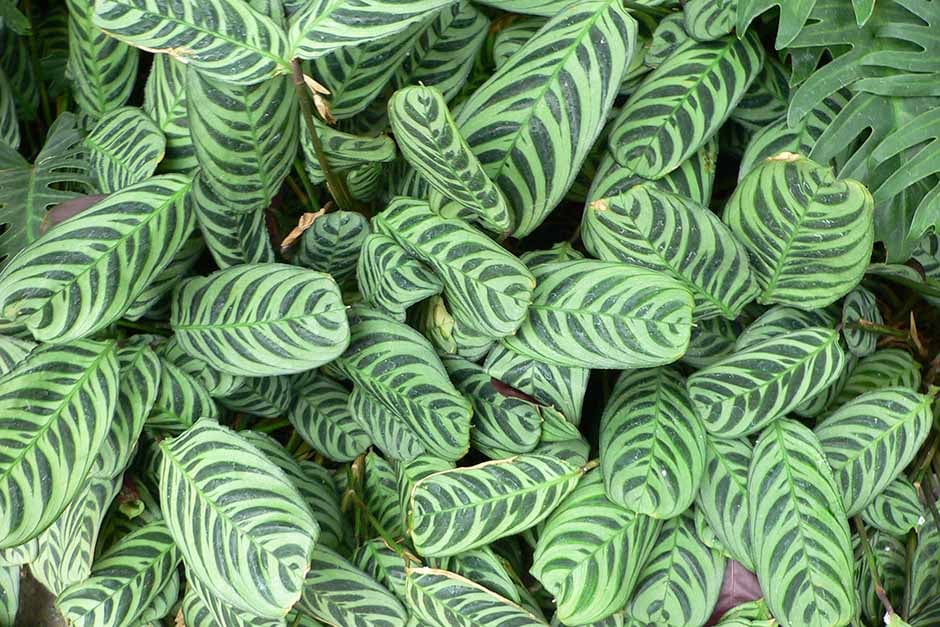
Ctenanthe burle-marxii
Light: Ctenanthe oppenheimiana prefers bright, indirect light. Avoid direct sunlight, which can fade its distinctive leaf markings. A spot near an east or north-facing window is ideal.
Watering: Keep the compost consistently moist but not waterlogged. Water when the few centimetres of compost feels dry to the touch. Use lukewarm water to avoid shocking the plant. During winter, reduce watering but do not let the compost dry out completely.
Humidity: This plant thrives in high humidity environments, mimicking its native rainforest habitat. If your indoor air is dry, especially in winter, use a humidifier, mist the plant regularly, or place the pot on a tray filled with pebbles and water to increase humidity.
Temperature: Maintain temperatures between 18°C and 24°C for optimal growth. Protect it from drafts and sudden temperature changes to prevent stress.
Fertiliser: Feed every during the growing season (April to September) following the instructions on the pack. Reduce feeding in autumn and winter as the plant growth slows.
Pruning: Pruning is generally not required, but you can trim off any yellow or damaged leaves to keep the plant looking tidy. Use clean, sharp scissors or pruning shears.
Repotting: Repot in the spring every 2-3 years or when the plant becomes root-bound. Use a well-draining compost mix and a pot just one size larger than the current one to avoid overwatering.
Pests and Diseases: Be vigilant for pests such as red spider mites, mealybug, and aphids.
Prayer plant
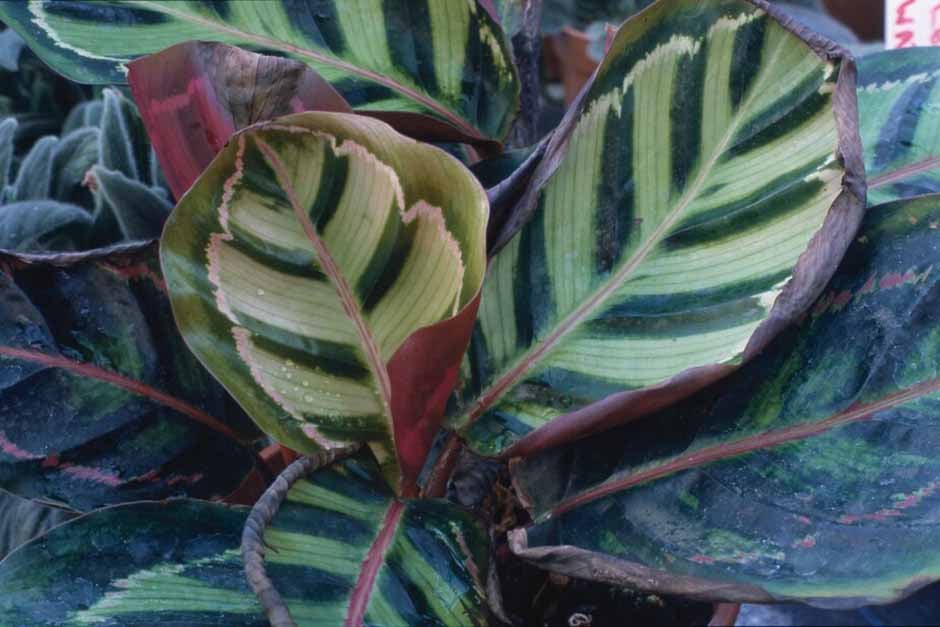
Calathea ’Medallion’
Light: This prayer plant prefers bright, indirect light. Direct sunlight can fade the colours on its leaves or even cause burns. A spot near an east or north-facing window is ideal to provide the necessary light without direct exposure.
Watering: Keep the compost consistently moist but not soggy. Water when the few centimetres of compost feels dry to the touch. calatheas are sensitive to fluoride and chlorine in tap water, which can cause leaf tip burn. Use filtered, distilled, or rainwater for the best results.
Humidity: High humidity is crucial for keeping a
Calathea ‘Medallion’ healthy, mimicking its rainforest habitat. Aim for 60 per cent humidity or higher. Use a humidifier, mist the plant regularly, or place the pot on a tray filled with pebbles and water to increase humidity around the plant.
Temperature: Ideal temperatures range between 18°C and 24°C. Avoid sudden temperature fluctuations and keep the plant away from drafts, air conditioners, and heating sources.
Fertiliser: Feed every during the growing season (April to September) following the instructions on the pack. Reduce feeding in autumn and winter as the plant growth slows.
Pruning: Pruning is not typically necessary for health but can be done to remove yellow or brown leaves. Use clean, sharp scissors and cut the leaves at the base to keep the plant looking tidy.
Repotting: Repot every 1-2 years or when the plant becomes root-bound. Use a well-draining potting mix rich in organic matter. Spring or early summer is the best time to repot.
Pests and Diseases: Watch out for pests such as red spider mite, mealybug and aphids.
Lady palm
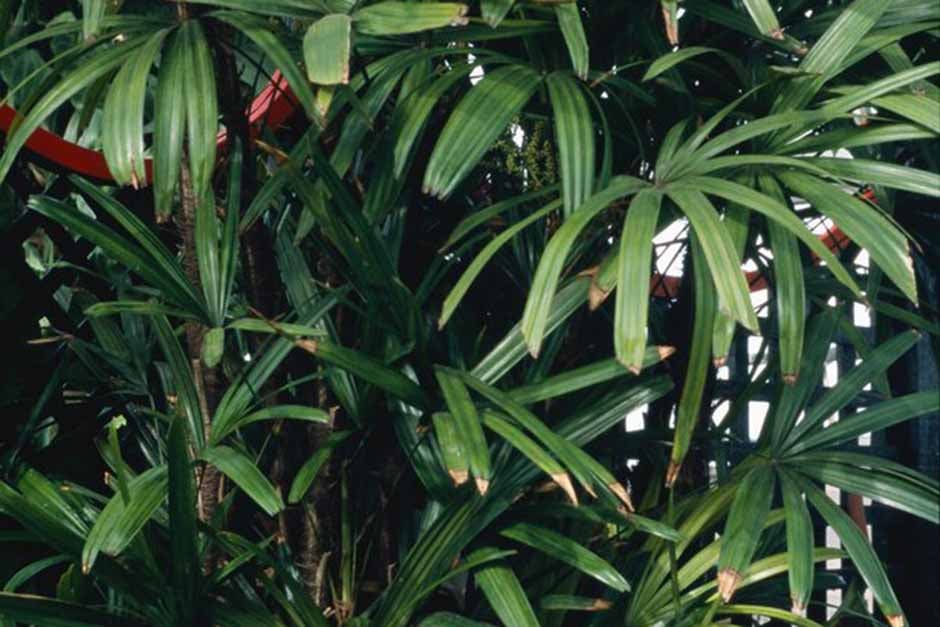 Rhapis excelsa
Light: Rhapis excelsa
Rhapis excelsa
Light: Rhapis excelsa prefers bright, indirect light but can tolerate lower light conditions. It’s an ideal plant for indoor environments where natural light is limited. Avoid direct sunlight, which can scorch its leaves.
Watering: Water when the few centimetres of compost feels dry to the touch. The bamboo palm likes consistently moist compost but not soggy. Overwatering can lead to root rot, so ensure the pot has good drainage.
Humidity: This palm benefits from moderate to high humidity but can adapt to average household humidity levels. If the air in your home is particularly dry, consider using a humidifier or placing the pot on a tray filled with pebbles and water to increase humidity around the plant.
Temperature: Maintain temperatures between 16°C and 27°C for optimal growth.
Rhapis excelsa is quite tolerant of temperature fluctuations but should be protected from extreme cold.
Fertiliser: Feed every during the growing season (April to September) following the instructions on the pack. Reduce feeding in autumn and winter as the plant growth slows.
Pruning: Pruning is not typically necessary for the health of the plant but can be done to remove yellow or brown fronds. Use clean, sharp scissors or pruning shears to trim as close to the stem as possible without damaging it.
Repotting: Repot the bamboo palm every 2-3 years or when it becomes root-bound. Use a houseplant compost with added grit and choose a pot that’s few centimetres larger than the current one. Repotting is best done in the spring.
Pests and Diseases: Rhapis excelsa is relatively resistant to pests and diseases.
Find out more...

